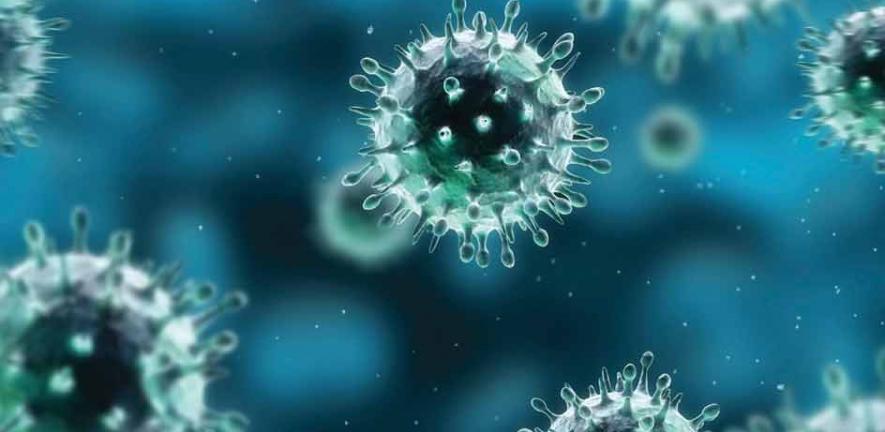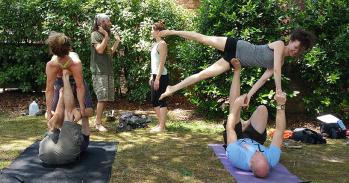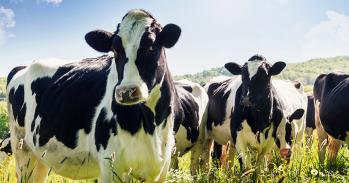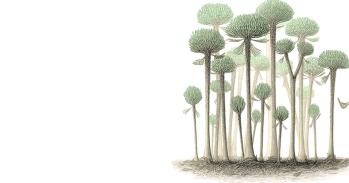
Cambridge scientists, and their map-making skills, are contributing to an annual worldwide public health endeavour – the race to select a vaccine against seasonal flu.
Cambridge scientists, and their map-making skills, are contributing to an annual worldwide public health endeavour – the race to select a vaccine against seasonal flu.
“It’s fast and it’s also visual – two criteria that are very important when dealing with large amounts of information of this type.”
Professor Derek Smith
A global killer that eludes capture by changing its coat, influenza is one of the world’s most intractable viruses and consuming public health challenges. It infects 5–15% of the world’s population and kills up to about half a million people each year; a figure that rose to many millions in the three major flu pandemic outbreaks that have occurred in the past century. In a single year in 1918, flu claimed more than five times the number of lives than were lost during the World War that preceded it.
It is the coat-changing behaviour that makes flu such a problem. The part of the virus that our immune system recognises is its outer coat. By changing the shape of the viral glycoprotein haemagglutinin that makes up most of this coat, the virus escapes destruction and begins the infectious process that spreads rapidly throughout the upper respiratory tract. Alarmingly, these so-called antigenic differences in the viral coat can evolve so quickly that a vaccine in use one year may be obsolete the next.
Spearheading the race to identify the best vaccine to combat seasonal flu, the World Health Organization (WHO) organises a consultation to make recommendations about the composition of the vaccine in February for the upcoming northern hemisphere’s flu season and in September for the southern hemisphere.
“It’s a very high-risk public health decision – 350 million people get vaccinated with the flu vaccine every year – so a lot rides on the decision of the committee,” said Derek Smith, Professor of Infectious Disease Informatics in the Department of Zoology. Since 2004, Professor Smith has been a member of the group responsible for making these crucial recommendations.
“It’s a huge responsibility and so every analysis that can be used is used,” he added. One analysis that is transforming how scientists track changes in the virus is antigenic cartography. Developed by Professor Smith with Dr Alan Lapedes (Los Alamos National Laboratory, New Mexico) and Professor Ron Fouchier (Erasmus Medical Center, Rotterdam), and first published in Science in 2004, the technique is useful not only for tracking the past evolution of the virus but also holds promise for predicting what comes next.
Global surveillance and map making
For over six decades, the WHO has orchestrated a remarkable global system to protect us against seasonal flu. Each year, 10,000–20,000 samples of the virus are isolated from throat swabs of patients presenting with flu-like symptoms by members of the WHO Global Influenza Surveillance Network in 105 countries. Many of these strains are then sent to one of the five WHO Collaborating Centers located in the USA, the UK, Japan, China and Australia.
And so begins the massive task of collating information about the flu viruses in circulation worldwide in the preceding months: to what extent the viruses differ genetically, epidemiologically and serologically; how fast they are spreading and to which global region; and how well current vaccines are likely to protect against them.
The most critical data for the vaccine recommendation come from the detailed antigenic analyses of the virus strains – essentially this gives the scientists a sense of how well our immune system, induced by prior infection or vaccination, will recognise a virus.
“For many years, people have looked at data for antigenic differences between pathogens in numerical, tabular form, but this is inherently difficult because of paradoxes that were not previously understood. Not many people can make accurate inferences from such data,” said Professor Smith. “We wanted to understand these paradoxes and be able to look at fine-grain differences between strains, and we wanted to interpret them in a more visual way.”
He likens the process to a road atlas. Just as understanding the relationship between different cities is difficult to visualise from a table of distances and yet easy to see on a road atlas, so too is the relationship between different viruses clearer when a table of lines of numbers is translated into a two-dimensional graphic. The end result – a series of coloured dots, each representing clusters of similar viruses – even resembles the geographical scattering of cities across a landscape.
“We use data from experiments that test how well antibodies bind to each strain’s coat protein and turn this into a geometric interpretation in which each antigen, and the antibodies against it, are assigned a point on an antigenic map,” Professor Smith explained. “Computationally it’s not complicated so it’s fast and fortunately it’s also visual – two criteria that are very important when dealing with large amounts of information of this type.”
The computer program is freely available as open source software at www.antigenic-cartography.org/. Today, laboratories worldwide, including Professor Smith’s, are now using the software to map diseases such as HIV, malaria, dengue fever and rabies, as well as Smith’s first love, influenza.
Have new coat, will travel
Significantly, the maps can be used to trace the evolution of different strains as they move around the globe. When Dr Colin Russell, Professor Smith and colleagues analysed 13,000 samples of influenza A (H3N2) virus from the WHO Global Influenza Surveillance Network, they were able to see how over the course of five years the virus drifted away from the original strain to form a series of new antigenic clusters of progressively different strains. Each time this cluster transition happens, a new vaccine is needed.
Not only was this experiment, which was published in Science in 2008, the first time that the evolution of a virus had been tracked in detail in this way, but it also provided an answer to the mystery of how flu circulates around the world.
Scientists have long wondered whether influenza epidemics arise from locally persisting strains or whether they are ‘seeded’ from other regions of the world. When Dr Russell looked at the maps of H3N2, it was clear that the viruses originated in East and Southeast Asia and then reached North America and Europe via Oceania after 6–9 months, finally ending up in South America a few months later. Once the H3 viruses leave Asia they rarely return, and thus regions outside of East and Southeast Asia are considered the ‘evolutionary graveyards’ of influenza viruses.
This information highlights the importance of ongoing collaborations and surveillance in East and Southeast Asia, as Dr Russell explained: “If we see an H3 virus in the region that has undergone a change then we know that we’re likely to see that in the northern hemisphere at some stage. It gives us a head start on what might happen next.”
“Many of the important pathogens that remain today are the pathogens that evolve,” added Professor Smith. “Flu vaccine is currently the only vaccine against an antigenically variable pathogen and the only one licensed to be updated every year. But as vaccines become available against dengue, HIV and so on, they would probably have to be updated too and it’s likely that similar worldwide monitoring systems will also be needed to track movement of these viruses.”
Predictive power
Currently, recommendations for influenza vaccine are based on the evaluation of past data. But what the scientists would like to do is use antigenic cartography as a means of predicting how the virus will evolve ahead of the event.
“In Cambridge, and with colleagues at Erasmus University, the primary aim now is to see how predictive this evolution is and to move the prediction horizon to a year ahead,” commented Professor Smith, who with Dr Russell and their team now analyses up to 20,000 flu viruses a year.
“We already have some indications that this is possible for influenza and, if so, the public health implications are vast – from predicting at a much earlier stage which vaccine might be best, to predicting where in the world the virus might migrate to next.”
This work is licensed under a Creative Commons Licence. If you use this content on your site please link back to this page.





